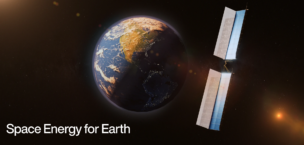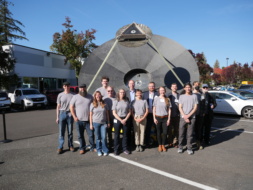Only 37 days separated Starship’s Flight 5 launch from yesterday’s Flight 6.
While SpaceX called off a booster catch attempt, the flight achieved several important milestones, including an in-orbit Raptor relight and a steeper Starship reentry descent angle.
Over the past few weeks—with growing confidence in the Starship program—SpaceX President Gwynne Shotwell and Starbase General Manager Kathy Lueders have been publicly mapping out what to expect from SpaceX and Starship in the coming years.
Starship Flight Ramp
SpaceX will end 2024 with four (or five) Starship launches. The company plans to accelerate its flight cadence next year.
- Kathy Lueders said that the team is targeting 25 Starship launches in 2025.
- Gwynne Shotwell followed those comments last week at the Baron Investment Conference, saying SpaceX could hit 400 Starship launches over the next four years.
For reference, Falcon 9 has yet to break 400 total launches over its 14-year history.
To hit this ramp schedule, the company will not only have to perfect catching the booster, but it will also need to begin catching its second-stage Starships and reflying charred hardware.
Slow → lightning fast: If SpaceX is able to achieve full and rapid Starship reusability, the pace of innovation would only accelerate —potentially transforming the notoriously slow-moving space industry into a fast-paced sector, forcing space businesses to move decisively to keep up.
To get a sense of the planned scale, on yesterday’s Starship livestream, SpaceX broadcaster Kate Tice advertised that the company is hiring to meet its goal of building a Starship every 8 hours, highlighting the company’s planned—albeit ambitious—acceleration. Quick math: 3 Starships per day x 365 days = 1,095 Starships built per year.
What is the cost of maintaining Starbase and developing the Starship program? Roughly $1.5B per year, according to a recent SpaceX legal filing. That is less than the cost of one SLS launch and a quarter of what Meta spends on Zuckerberg’s “Metaverse” virtual reality bet each year.
A Falcon 9 End Date
“Starship is really a replacement. It obsoletes Falcon 9 and the Dragon capsule,” Shotwell commented. SpaceX’s president said Falcon 9 will fly for six to eight more years, and then everything will be moved to Starship. That includes human spaceflight.
The idea of dozens of astronauts hitching a ride to LEO on a Starship and then belly-flopping back to Earth seems awfully unsafe today. But, if the company can achieve 400 flights over the next half decade and prove out reliability, human missions could become commonplace.
Rocket competitors: The Falcon retirement date news was likely celebrated by SpaceX’s medium-lift rocket competitors, such as Firefly and Rocket Lab, who could step in and offer dedicated launches to customers that don’t need Starship’s volume capacity.
Starlink Adds a Zero
The company is building 60 Starlink satellites per week and will make money on the satellite internet service this year, Shotwell said. She specifically pointed to improving chip and antenna technology as key drivers of product success. “The cycle of the increased capacity is basically on the same cycle as chipsets…Moore’s law.”
The next version of Starlinks will have smaller beams, more capacity per beam, lower latency, and will likely fly at a lower altitude, which SpaceX believes could enable 1GB connectivity, up from 100 to 200 MBPS speeds today.
The company is closing in on 5M Starlink users.
- Shotwell believes Starlink will help further propel the company’s $250B valuation further.
- “The company is incredibly valuable,” Shotwell said. “I think Starlink will add another zero, probably at least, as we continue to grow the Starlink system.”
Starlink market: “There are 8B people on the planet and we are serving not quite 5M people yet. The market is huge,” said Shotwell.
With 30% of the world’s population not having broadband access, Shotwell believes the market is big enough for Starlink competition. “I think there is plenty of room in this industry, plenty of room for competition.”




